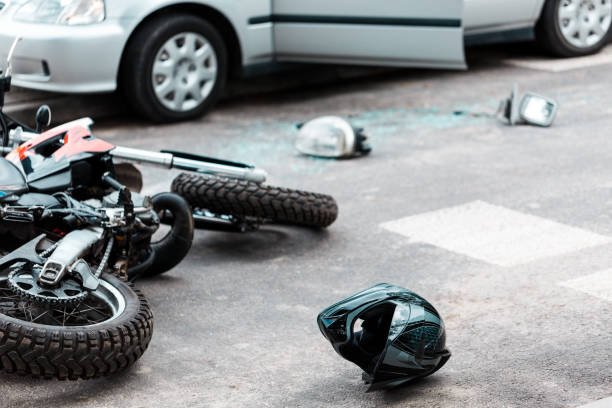
You’re 30x more likely to be in a motorcycle accident than a car crash. Moreover, the injury rate in motorcycle accidents is a staggering 80%, four times more than in car crashes.
Sadly, the numbers keep rising in Minnesota, for instance. According to the Minneapolis Department of Public Safety, there were more than 78 motorcycle accident fatalities in Minnesota by September 2022, up from 60 in 2021.
If you have been in a motorcycle accident, experienced motorcycle accident lawyers from reputable law firms are your best bet to better understand how motorcycle accident compensation claims work. Attorneys and insurance providers will also help you determine liability and hold the guilty party accountable for your losses. Here’s what you need to know about determining fault after a motorcycle accident:
Motorcyclists are Often Wrongly Assumed Guilty
Unfortunately, motorcyclists face an assumption of guilt after a crash. Whenever an accident involves a motorcycle, the rider is automatically assigned full responsibility or the greater share of liability.
But this is completely unfair. According to the Hurt Report by the National Highway Traffic and Safety Administration (NHTSA) that analyzed over 900 motorcycle accidents, the other party is responsible most of the time. The report shows that the other vehicle is responsible for the accident 66% of the time.
It further shows that most motorcycle accidents involve vehicles turning left without considering trailing motorcycles traveling straight. Often, the driver doesn’t see the motorcyclist.
However, motorcyclists have a bad public perception. Most people, including drivers and pedestrians, consider them reckless and dangerous. Therefore, the motorist is assumed to be at fault even when they’re the victim.
Who May Be Responsible for a Motorcycle Accident?
More than one party may be liable for a motorcycle accident. So, cast your net wide when determining liability. Potentially responsible parties include:
- The complainant: A negligent motorcyclist may be held liable for the crash. For instance, overspending, impaired driving, and running a red light are traffic violations.
- The other motorist: The other driver or motorcyclist is liable if they broke traffic laws, such as speeding, using a cell phone while driving, or driving under the influence.
- Pedestrians: A pedestrian sharing the road can cause an accident if they fail to follow traffic laws.
- Manufacturers and OEMs: The motorcycle manufacturer and original part makers (OEMs) are partly liable for the accident if the motorcycle or specific parts are defective or of poor quality.
- Repair shops and technicians: If the motorcycle fails due to poor repairs, the repair shop and attendant may be held partly liable.
Road maintenance authorities may also be partially liable for a motorcycle crash in case of poor road conditions or improper signage.
How Insurers Determine Liability in Motorcycle Accidents
Insurers rely on evidence to determine and assign liability. The following are a few crucial pieces of evidence they depend on:
- Police reports
The police compile a preliminary report at the scene of the accident. A police report contains statements from the drivers and witnesses. In addition, it may include traffic violations, such as speeding, intoxication, and negligence. This data can help insurers determine fault.
- Witnesses
Sometimes the police report contains witness information that the insurer can interrogate. Alternatively, one or both drivers may take the contact information of a few eyewitnesses. If so, the insurer can interview the witnesses to gather additional evidence.
- Photos and videos
Again, most motorists take photos and record videos of the scene for claims processing. Moreover, nearby stores and business establishments may have security cameras. Insurance adjusters can work with lawyers to obtain and check the videos for clues.
- Accident reconstruction expert reports
In a high-stakes case, the insurer may hire an accident reconstruction expert to help determine fault. The experts apply various principles, especially Math and Physics theories, to recreate the accident. Then a forensic analysis follows to identify liable parties.
Assigning Damages
After determining fault, the insurance company assigns each liable party a percentage of liability and uses the ratios to determine awards. Parties who are unhappy with their share of liability or awards can go to court for a full trial.
Summary
Determining liability in a motorcycle accident is more challenging than most people think. But that doesn’t mean you should give up your rightful compensation. Hire an experienced motorcycle accident lawyer if you’ve been injured or suffered other losses to discuss your options and obtain fair compensation.



